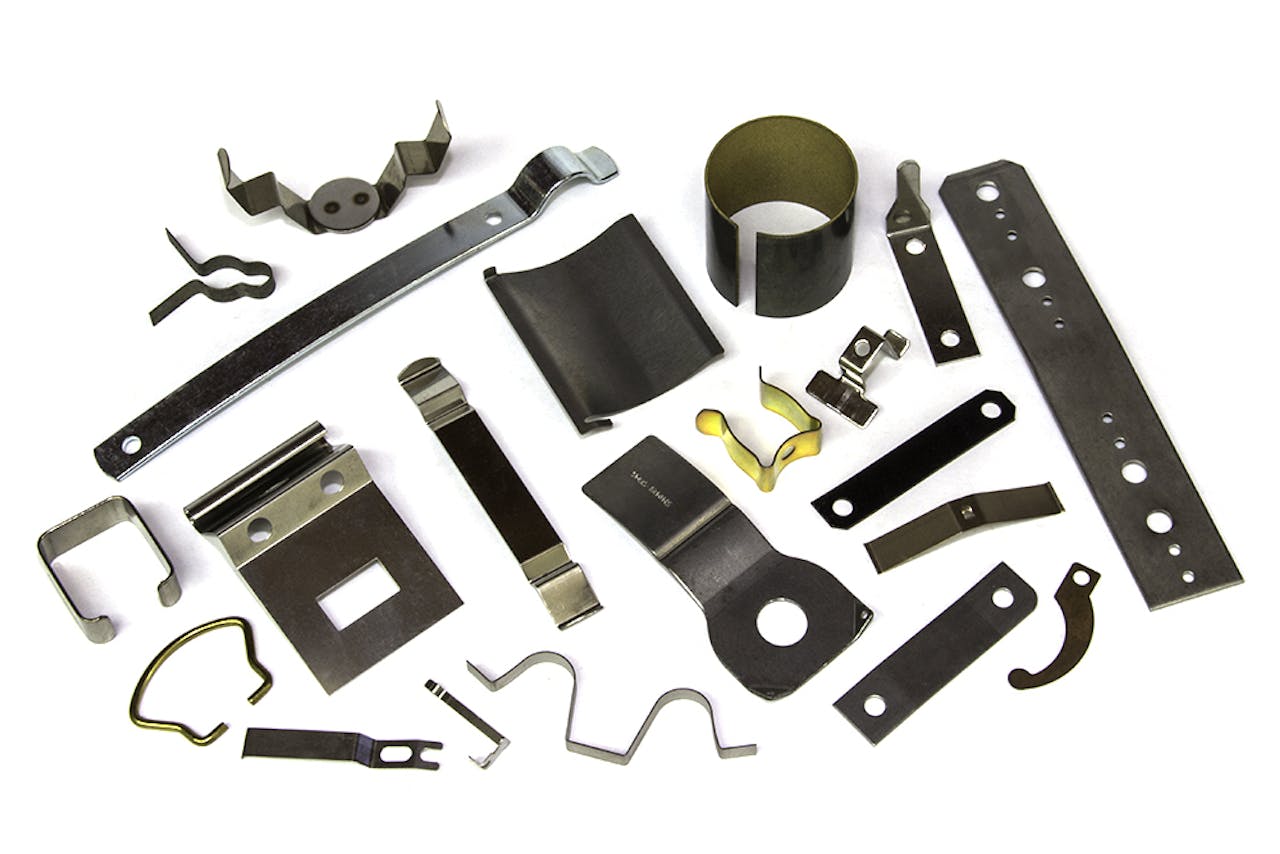Enhancing Productivity and High Quality Through Modern Steel Stamping Methods
As the demands for precision and efficiency proceed to intensify, the combination of automation and electronic devices into the metal marking process has come to be vital. By exploring the elaborate interaction in between modern technology, automation, and accuracy in metal marking, a pathway towards unrivaled productivity and high quality guarantee unfolds.
Advantages of Modern Steel Stamping
Modern steel marking deals countless benefits in terms of performance, accuracy, and cost-effectiveness in the manufacturing sector. Among the key advantages of modern-day metal marking is its capability to successfully produce high quantities of complex steel components with consistent high quality. This process removes the need for multiple procedures as it can perform numerous jobs such as blanking, piercing, creating, and reeling in a single operation.
In addition, modern steel stamping makes it possible for producers to achieve tight resistances and specific specifications, making certain that each part fulfills the required requirements. This high degree of precision results in marginal product waste, lowered rework, and total enhanced item high quality.
In addition, contemporary metal marking is a cost-effective production approach. The automation and high-speed capabilities of contemporary marking equipment cause reduced labor expenses and faster production rates. This effectiveness not only decreases manufacturing costs but also enables companies to fulfill tight production target dates and supply items to the market faster. Fundamentally, modern-day steel marking deals an affordable edge to suppliers seeking to improve productivity and quality in their operations.
Advanced Technologies in Metal Stamping

One more key modern technology revolutionizing metal stamping is the usage of servo presses. Unlike traditional mechanical presses, servo presses provide better control over the rate and pressure applied throughout the marking procedure. This control not just enhances the quality of the stamped components yet also decreases product waste and energy intake.
In addition, developments in simulation software program have actually allowed producers to virtually check and optimize the marking procedure prior to physical production starts. This virtual prototyping assists determine prospective problems early on, causing cost financial savings and faster time-to-market for new items. In general, these innovative technologies in steel marking are driving unmatched levels of efficiency and high quality in the market.
Improving Effectiveness With Automation
The combination of automated systems has actually dramatically improved the performance of metal marking processes. Automation in metal marking operations supplies a myriad of benefits, consisting of raised manufacturing rates, enhanced accuracy, and minimized labor costs. By utilizing robotic arms and computer-controlled equipment, jobs that were previously lengthy and vulnerable to errors can currently be performed promptly and with amazing accuracy.
Automated systems have the ability to manage recurring jobs with consistency, resulting in higher productivity degrees and minimized cycle times. This boosted effectiveness not only results in cost savings but also makes certain a more streamlined and trustworthy production process. Additionally, automation permits real-time monitoring and information collection, allowing manufacturers to determine and attend to problems without delay, additional enhancing the total performance of metal stamping operations.
In addition, automation advertises a much safer working atmosphere by lowering the need for hand-operated intervention in unsafe jobs. By passing on these responsibilities to automated systems, employees can concentrate on even more complicated and value-added tasks, adding to a much more efficient and effective process in the metal marking industry.

Quality Assurance Measures in Marking
Implementing strict quality control measures is vital in ensuring the precision and consistency of metal marking processes. One of the Homepage primary quality control measures in steel stamping is performing routine examinations throughout the manufacturing cycle.
In addition, executing advanced innovations such as automated vision systems can even more enhance the quality control process by making it possible for real-time click reference monitoring and discovery of any anomalies during manufacturing. These systems make use of cams and computer formulas to inspect parts with high precision and accuracy, reducing the danger of problems running away right into the end product.
Moreover, establishing an extensive documentation system that tape-records quality assurance data and assessment results is essential for tracking efficiency trends and helping with constant renovation campaigns. By evaluating this data, makers can recognize possible locations for optimization and carry out restorative actions to improve the overall top quality of their stamped items.
Enhancing Precision With Digital Tools
Using digital devices can dramatically enhance the precision of steel marking procedures, revolutionizing the means suppliers accomplish precision in their production. Digital tools such as computer-aided design (CAD) software permit the development of intricate stamping layouts with exceptionally exact dimensions. By inputting comprehensive specs right into the software application, manufacturers can guarantee that each stamped item satisfies specific dimensional needs, reducing mistakes and waste in the production process.
Furthermore, the integration of sensors and real-time tracking systems in stamping tools enables makers to closely keep track of the stamping process and make immediate modifications to guarantee specific outcomes. These electronic devices provide valuable data on variables such as pressure, rate, and placement, allowing for quick recognition and modification of any inconsistencies from the desired specs.
Final Thought
To conclude, modern steel stamping methods provide many benefits for boosting performance and high quality in making processes. By utilizing sophisticated modern technologies, automation, top quality control steps, and electronic devices, companies can boost effectiveness, accuracy, directory and overall performance. These technologies in steel marking not just simplify manufacturing processes yet likewise make certain constant and high-quality results. Embracing these contemporary techniques can lead to considerable improvements in the manufacturing market.